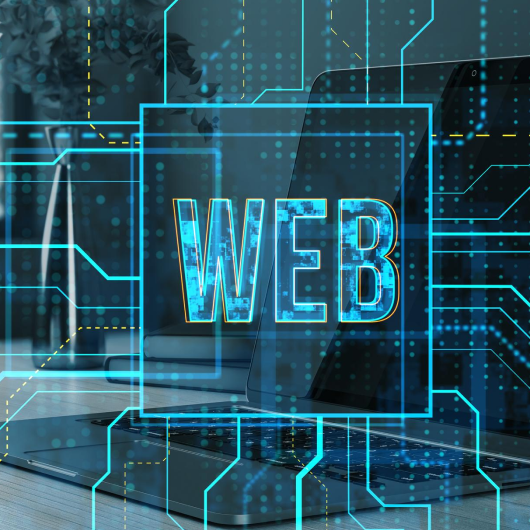The concept of Web 3.0 in simple words

Since its emergence, the Internet has changed a lot. It has gone from static pages with pictures and text to complex decentralized applications that provide users with innovative solutions in various areas.
In the community appeared the term "Web 3.0", which marked a new stage of Internet technologies and the further vector of their development. What is Web 3.0? What are its main characteristics and prospects? We tell you about it in the article.
Stages of Internet evolving
The evolution of the Internet has gone through several stages, each of which differed in the way users interacted with digital technologies. Let's briefly look at the definitions and main differences between these stages.
Web 1.0 — static web
Web 1.0 refers to the early period of Internet development, which was characterized by static web pages with limited interaction options. It was a "read-only" page format where users only received information and could not make changes or interact with it.
The Web 1.0 stage is characterized by static HTML pages, no user-generated content, browsing capabilities, and centralized control of site content by site owners.
Web 2.0 — social web
The concept of Web 2.0 spread after the publication in 2005 of Tim O'Reilly's article "What is Web 2.0" about the new stage of development of the Internet network. It meant the transition to an interactive and social era of the Internet, in which it became possible to create user-generated content, social networks, and collaborative platforms. The term Web 2.0 refers to the current version of the Internet.
This stage focuses on user involvement, sharing information, and creating content on pages in real time. With the beginning of Web 2.0 came social networks, blogs, video-sharing platforms, collaborative platforms (e.g., Wikipedia), and dynamic web content.
Web 3.0 — decentralized web
Web 3.0 (also Web3) is the evolution of the Internet to its decentralized, secure, and user-centric version. The Web 3.0 concept actively uses blockchain technology and decentralization principles to give users more control over their data, transactions, and interactions with the Internet and other users on it.

Key characteristics of Web 3.0
As part of the Web 3.0 concept, developers are trying to rethink the interaction of users with the Internet, digital technologies in finance, and ways to protect information on the network. Let's consider the main characteristics of this stage of Internet development.
1) Decentralization. At the core of Web 3.0 is the use of blockchain technology to distribute control among centralized entities. This contributes to a decentralized and transparent internet where users will have more autonomy and control over their data and interactions in the digital space.
2) Tokenization and cryptocurrency. The concept involves the use of tokenized assets and cryptocurrency as fundamental components. These digital assets can represent ownership, access to limited products, or utility in decentralized applications (dApps) and platforms, enabling new economic models and incentivizing holder participation.
3) Interoperability and open protocols. In Web 3.0, many decentralized systems are interoperable, allowing easy interaction between different applications and protocols. Open-source protocols allow developers to build on existing infrastructure and create compliant products.
4) Data privacy and ownership. Decentralized Web 3.0 identity solutions, smart contracts, and other cryptographic techniques aim to protect data privacy and allow users to control and monetize their data.

Perspectives and nuances of Web 3.0
Despite the huge potential of Web 3.0, there are challenges such as scalability, regulatory uncertainty, vague definition of the concept, and implementation difficulties. Overcoming these hurdles requires close collaboration between developers, technology development, and regulatory frameworks.
Web 3.0 is an important step towards a more open, secure, and decentralized Internet. Its prospects are not limited to technology but also include social, economic, and governance areas. As Web 3.0 evolves, its impact on various industries and social structures may increase, providing Internet users with new opportunities for interaction.
Share
Interesting
Would you like to receive a digest of articles?
One email with the best articles of the week.
Sign up so you don't miss anything.